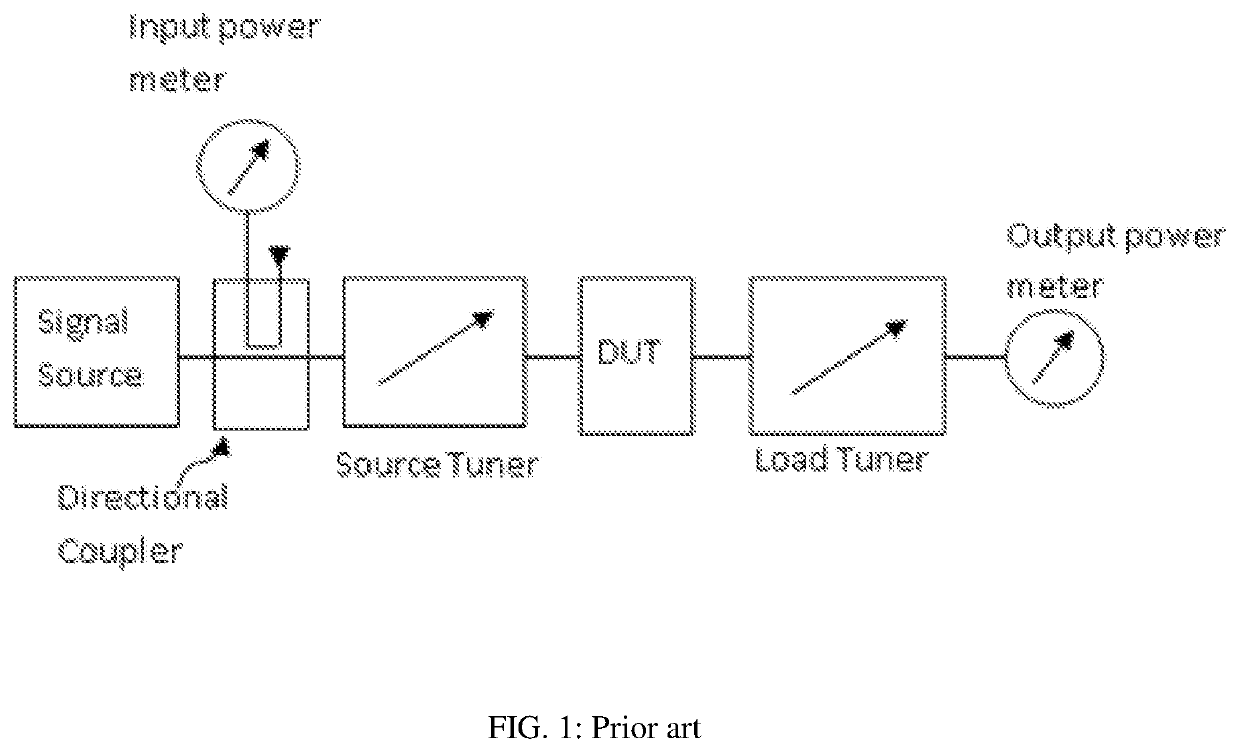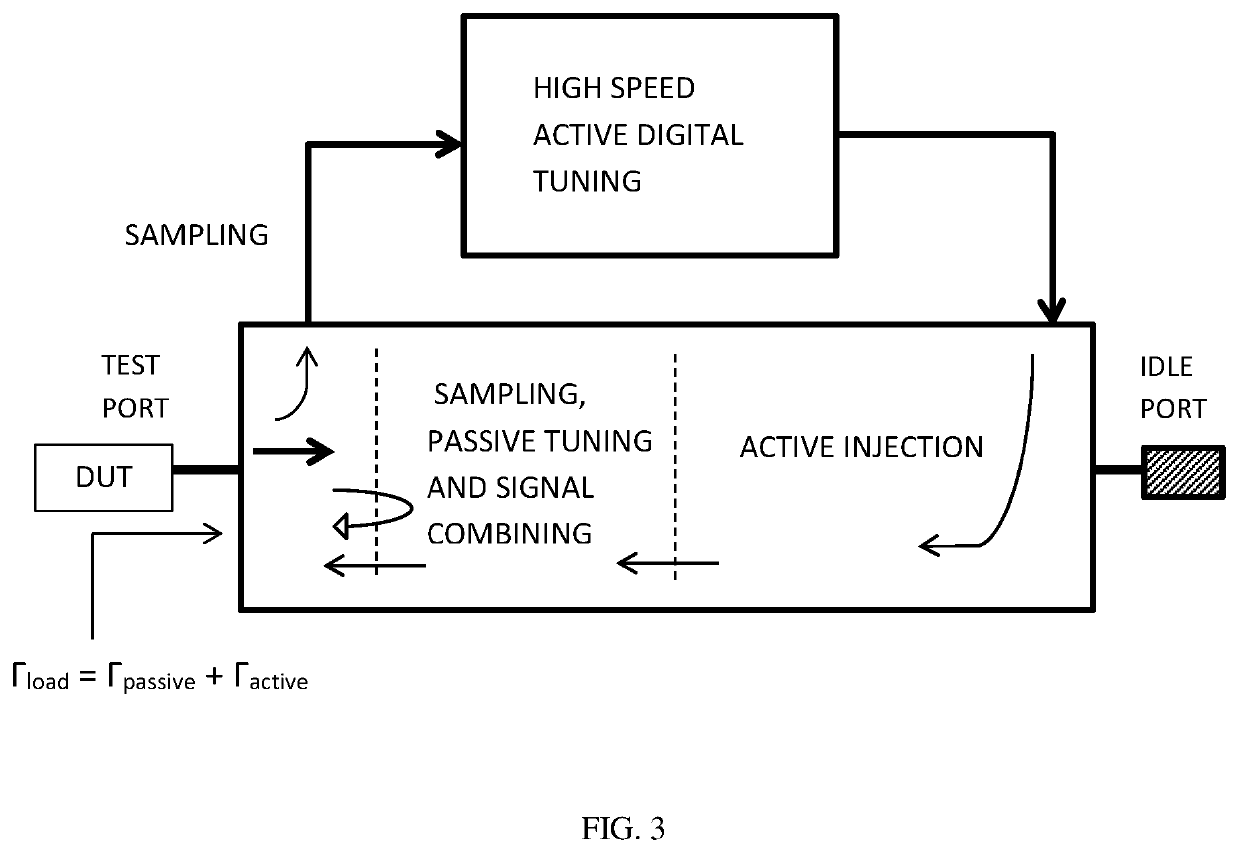Digital load pull tuner
a digital load and tuner technology, applied in the direction of impedence networks, waveguide devices, electrical devices, etc., can solve the problems of reducing the tuning range of the tuner, introducing insertion loss, and dut cannot be “matched”, so as to minimize spurious reflection and insertion loss, improve compactness, and improve the effect of compactness
- Summary
- Abstract
- Description
- Claims
- Application Information
AI Technical Summary
Benefits of technology
Problems solved by technology
Method used
Image
Examples
Embodiment Construction
[0028]In a first embodiment of the invention (FIGS. 2 and 5) the signal exiting from the DUT output port enters the tuner into the test port (50); then it is sampled by the first adjustable coupler (51), FIG. 12, of which the coupling factor and phase are controlled by approaching its coupling loop (51) to the center conductor of the slabline (53) via the vertical axis (56) and motor (52) and its phase by changing the physical distance of the coupling loop (51) from the test port (50). The coupled signal portion propagates from port (57) through an optional filter to port 1 of circulator (58). From port 1 the signal is transferred with negligible insertion loss to port 2 where it is reflected back at the test port of the digital solid-state tuner (59). The multitude of reflection factors generated by the digital tuner is shown in FIG. 7A; this means the amplitude and phase of the reflected signal wave is digitally modulated by ΓET=|ΓET|*exp(jΦET), as shown in FIG. 7A. The reflected ...
PUM
 Login to View More
Login to View More Abstract
Description
Claims
Application Information
 Login to View More
Login to View More - R&D
- Intellectual Property
- Life Sciences
- Materials
- Tech Scout
- Unparalleled Data Quality
- Higher Quality Content
- 60% Fewer Hallucinations
Browse by: Latest US Patents, China's latest patents, Technical Efficacy Thesaurus, Application Domain, Technology Topic, Popular Technical Reports.
© 2025 PatSnap. All rights reserved.Legal|Privacy policy|Modern Slavery Act Transparency Statement|Sitemap|About US| Contact US: help@patsnap.com



